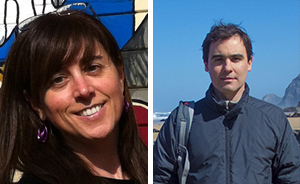Working Group 2
Working Group Leaders:
Deep lithospheric structure and mechanical behaviour of TTPBs
Participants from WG2 will focus on model the lithospheric structure and temporal evolution of deformation along TTPBs and monitor the mechanical and seismic behaviour the faults. The aim is to understand how large earthquakes can nucleate in hydrated mantle at TTPB. The two sub-groups are:
- Structural behaviour of TTPBs, lithospheric architecture from slow-ridges accretion zone to old (> 65 Ma.) including characterization at old seamounts
- Seismic events related to TTPBs – monitoring efforts and hazard potential
Major questions include:
- What is the long term effect of transform faulting on the structure and evolution of oceanic lithosphere?
- What is the role of fluid-rock interaction on the rheology of oceanic lithosphere?
- How does serpentinization affect seismogenesis (EQ rupture nucleation, and propagation) along TTPB? Implications for geohazards assessment
- How do transform faults respond to different kinematic regimes and how do they terminate and/or link to other plate boundaries?
- What is the connection between deeply rooted tectonic processes and fluid expulsion phenomena?
- Can tremors and low-frequency earthquakes (indicative of fluid-fault interactions) be detected at the study sites?
WG 2 will concentrate during the first year of FLOWS on
- Review and update specific goals and fundamental questions of WG2
- Define state-of-the-art knowledge on lithospheric structure, mechanical and seismic behaviour of strike-slip faults at TTPBs (focusing on FLOWS study areas)
- Encourage participation on EU EuroFleets-2 regional calls to request for shiptime in FLOWS study areas (Atlantic and Mediterranean)
- Compile and develop ideas for training schools and field-trip based workshops to address specific topics defined in WG2 and of interest to the all FLOWS WGs
- Discuss and promote links with international initiatives and activities related to WG2
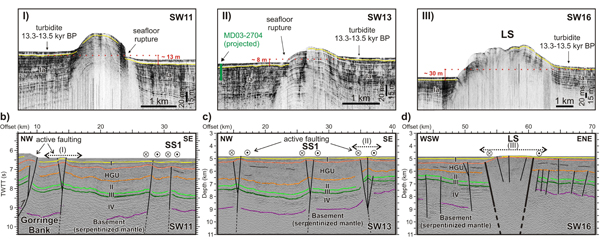
TOPAS (topographic parametric sounder) and interpreted time and depth migrated multichannel seismic reflection sections across the large dextral strike-slip fault referred to as Lineament South (SW Iberian margin) (Martínez-Loriente et al., 2013)

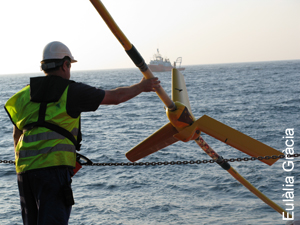
Launching one of the "birds" along the Sercel SEAL streamer. The chase boat "RV Investigador" is on the background
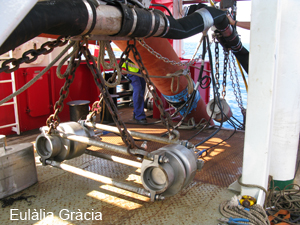
An airgun cluster of the gun array installed on the starboard side of the RV Sarmiento de Gamboa
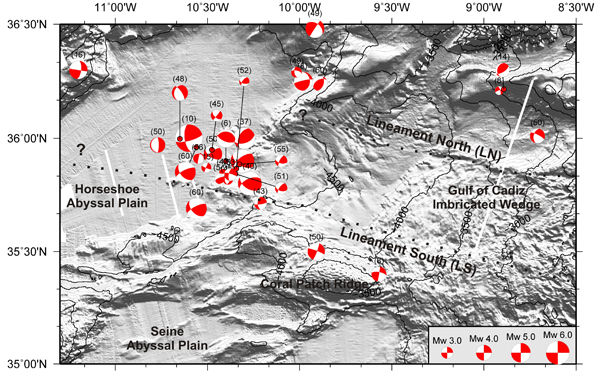
Gray-shaded relief map showing focal mechanisms of recent earthquakes in the external part of the Gulf of Cadiz, near the Lineament South (LS). Depths of seismic events are in parentheses (in km) (Bartolomé et al., 2012)

